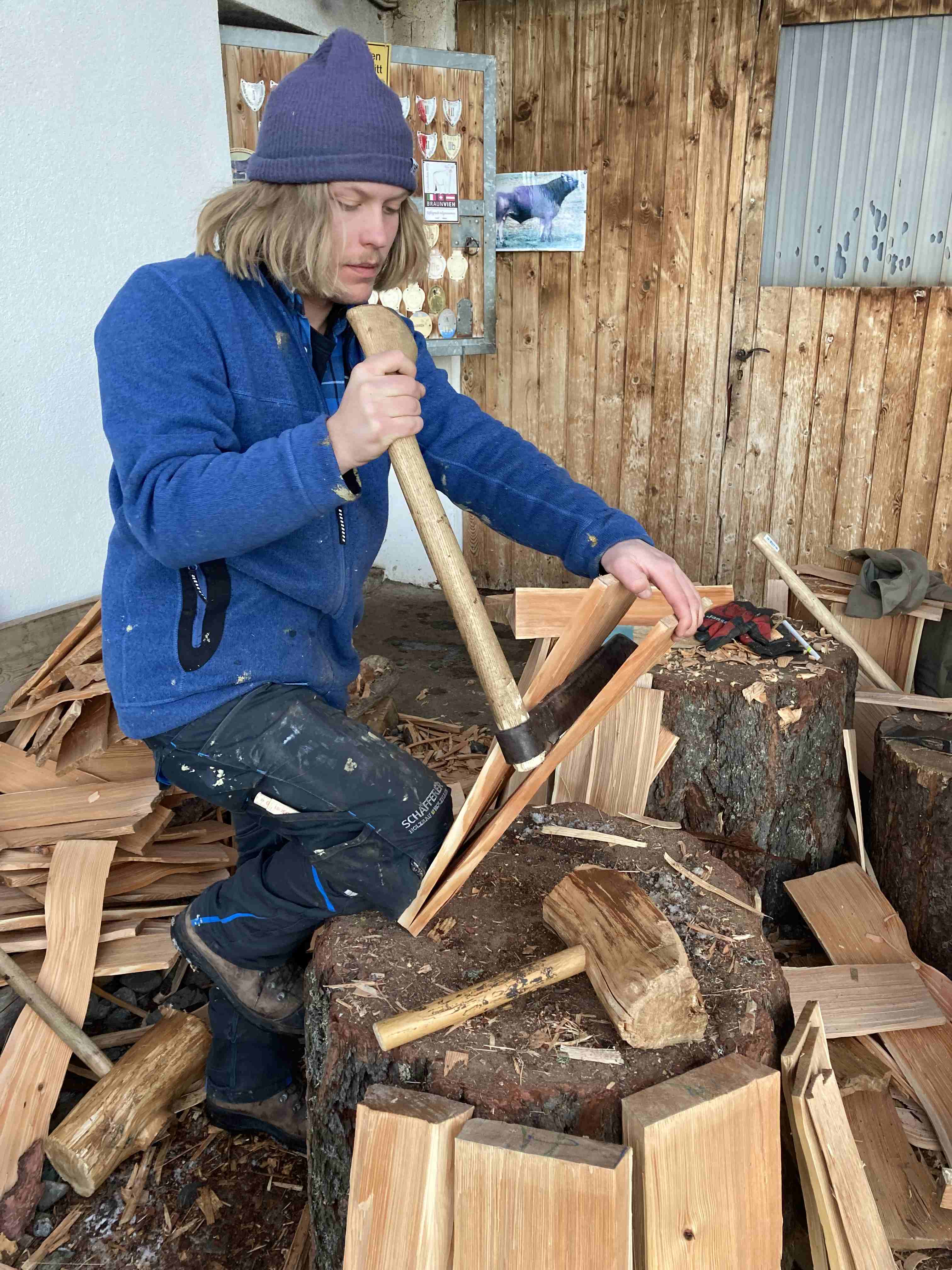Knowledge about the production of wooden shingles: shingle splitting—’Schindel kliabn’
Wooden shingle roofs are particularly eye-catching features of landscapes. The task of splitting shingles has been passed on for generations and is practiced by regional alpine farmers and forest workers. Wooden shingles are a widely used, time-tested roofing material with an extremely low ecological footprint. This craft has barely changed over the centuries and is still being handed down to younger generations.
In Austria, shingle roofs can be traced back over 3000 years to the present day. This involves practising the traditional method of woodworking by splitting the trunk lengthways. It takes skill not only to practise the craft, but also to choose the right tree trunk, select the wood, and determine the correct time for felling. Over the course of the centuries, the work of shingle makers has barely changed and relies on traditional local expertise. Shingle making, which is often done at home during the winter, is subject to a number of traditional work rules, although there are regional variations throughout Austria. This craft creates a sense of identity and has been handed down within families of local Alpine farmers and forest workers for many generations. Knowledge of professional splitting and proper roofing is passed on to young people as they work together with experienced workers. From a linguistic point of view, the dialect term ‘Schindel kliabn’ comes from the Latin word ‘scindula’ (shingle) and the old Bavarian word ‘klieben’ (to split).
Wooden shingles are notable for their extremely low ecological footprint. They constitute a durable and easy-to-repair natural product for roofs and wall panelling and do not pose an environmental burden when they are disposed of. Owing to their environmentally friendly nature, wooden shingles are often used as a building material in national parks and nature reserves and thus protect their inhabitants. In addition, they exude a special aesthetic as a building material, a closeness to nature, and harmony with their surroundings. Modern building culture successfully harmonises an architectural future with the shingle wood cultural heritage of the past.
Due to cost considerations, hydraulically operated splitting machines are increasingly being used, thus overshadowing the old craft. For a short time, Austrian mountain shingles were also replaced by imports of highly mechanised wooden shingles. Annual regional wood culture events are staged to promote the traditional craft and increase awareness in urban areas, too. The significance of the extensive wooden shingle practice can be experienced up close at events such as wood markets, craft fairs, and Advent markets.
Downloads
- Application form (German only) 9 MB (pdf)
- Expertise Holzinger (German only) 434 KB (pdf)
- Expertise Krondorfer (German only) 1 MB (pdf)

